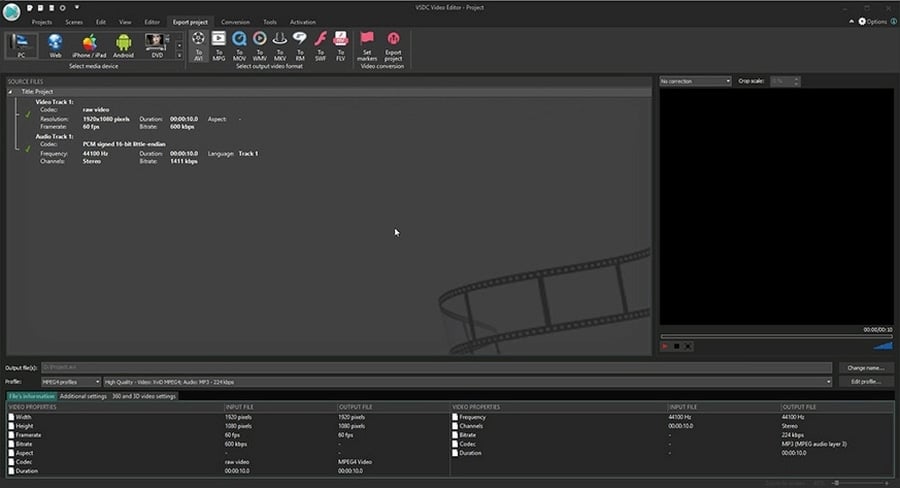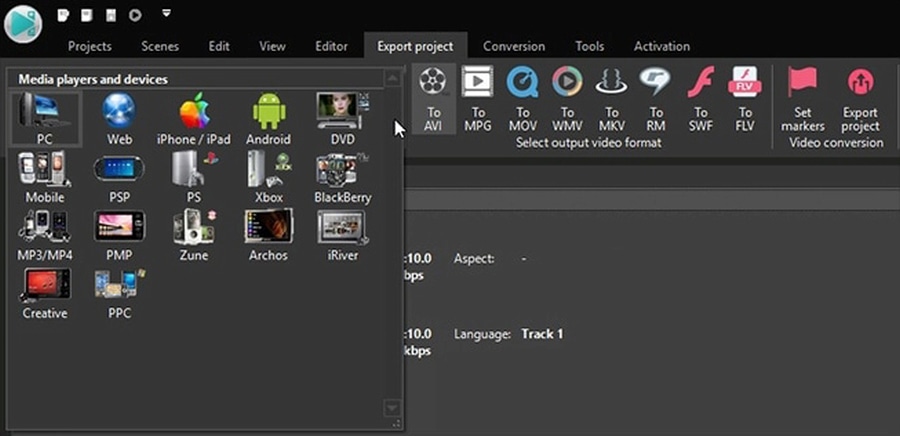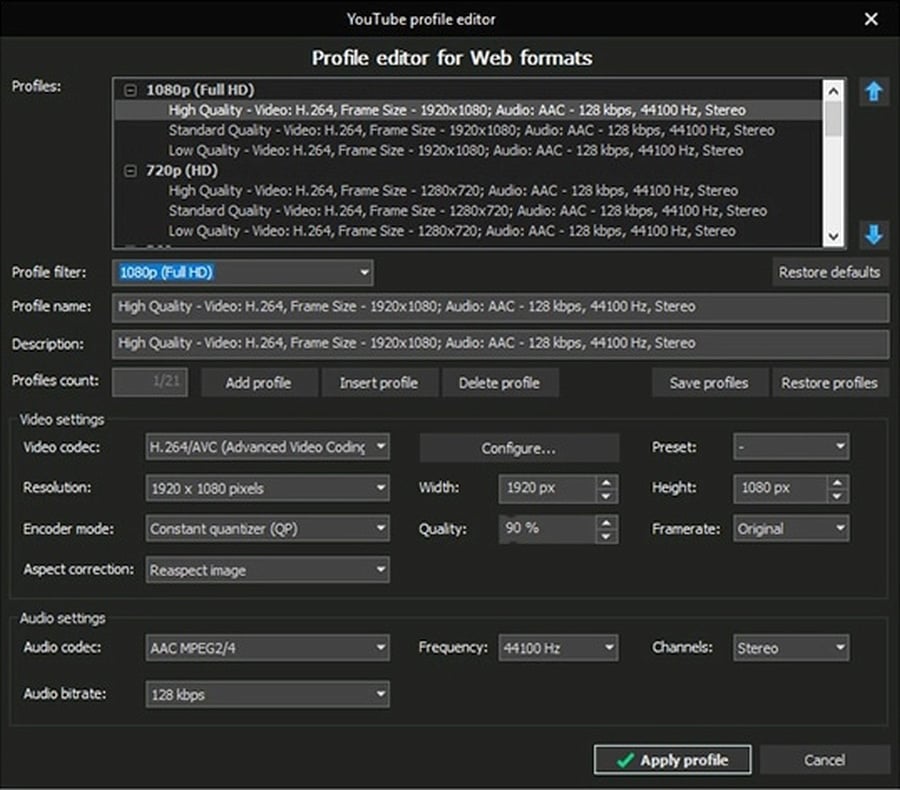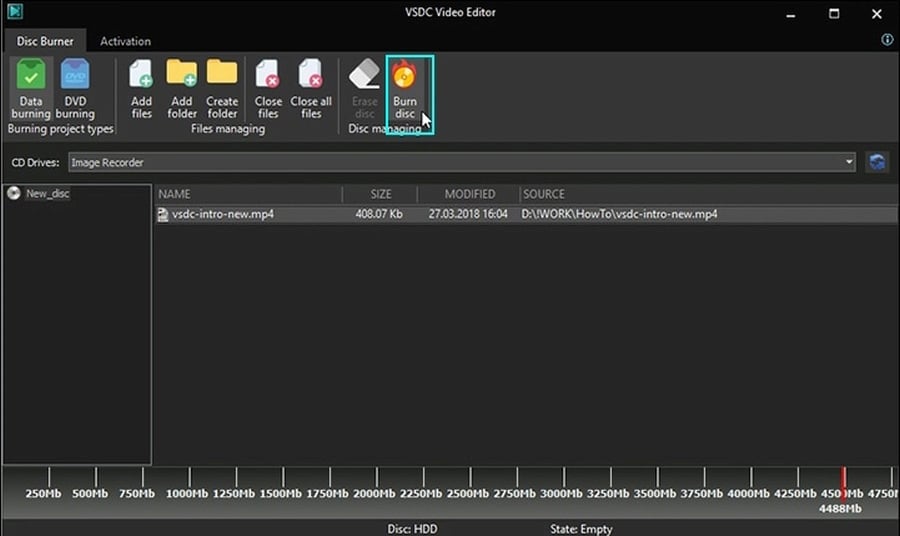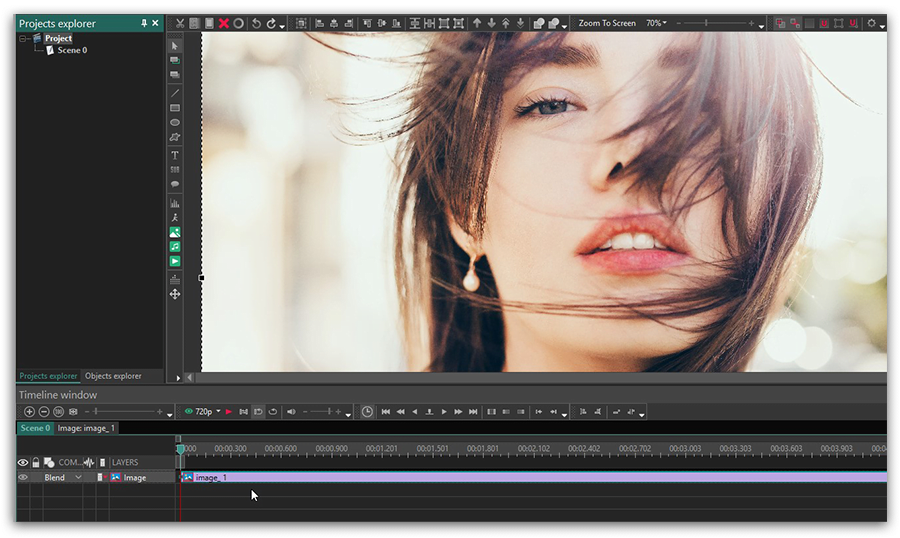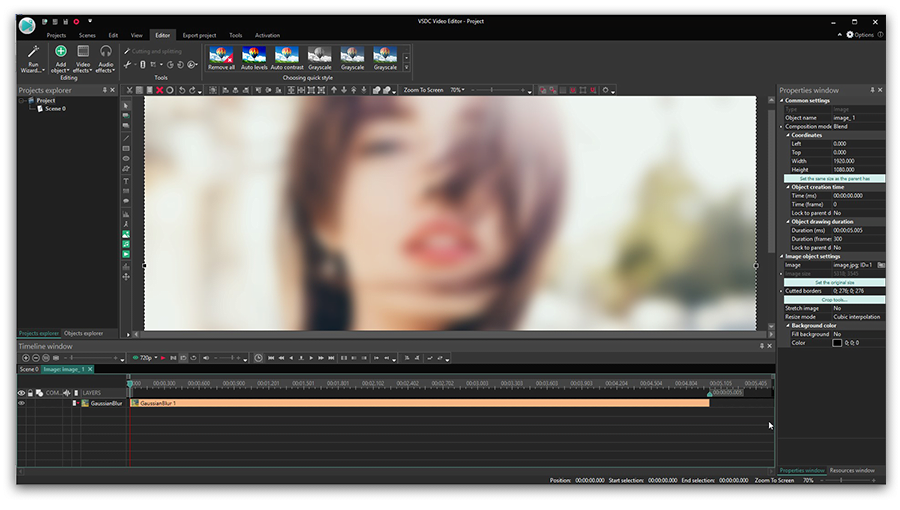Video Editor
Use free video software to create and edit videos of any complexity from a family greeting card to a company presentation. Cut, merge video files, apply visual and audio effects, use filtration and image correction, make slideshows and add an appropriate soundtrack. Use multi-color Chroma Key and advanced parameters settings to give your video a professional look. All popular video and audio formats are supported.
Video Converter
This program is intended for converting video files from one format to another. Nearly all popular video formats are supported (both reading and saving). In addition, the program drastically simplifies the task of converting videos for playback on specific multimedia devices, such as iPhone, Samsung Galaxy or Huawei P30 Pro. The program is extremely easy to use, has a modern interface and all necessary video processing functions.
Audio Converter
The audio converter will help you convert audio files from one format to another. All key audio formats and codecs are supported. The program also allows you to manage playlists and meta tags, extract audio from video files and save these tracks on your computer in any format.
Audio CD Grabber
This audio tool is intended for grabbing audio tracks from compact discs and saving them to the user’s computer in any format. Nearly all popular audio formats and codecs are supported. The program can also extract track details from the FreeDB server for automatic file renaming and updating meta tags.
Video Editor
Video Converter
Audio Converter
Audio CD Grabber

Multifunctionality
A wide array of multimedia processing tools in one free video software suite.

High speed
Our programs use fast
and high-quality algorithms optimized for single and multi-core CPU’s.

Affordability
VSDC video software is freely available for download to Windows OS-based PCs and laptops.
- Welcome to the next level of video editing with VSDC's latest release, Version 9...
- Welcome to the latest VSDC update, Version 8.3! We've been working hard and we’r...
- In today’s digital landscape, the popularity of video content is gaining momentu...
- In today's digital world creativity reigns supreme. It offers endless possibilit...
Use VSDC Free Editor for Cropping Video Borders
Accidentally recorded too much of the surrounding area? Need to focus on a particular object in the scene? Discovered a slip of your finger while previewing the footage? There can be many reasons you might want to crop a video or remove its borders. The important part is to be able to do it without losing quality, right?
While most mobile apps aren’t capable of fulfilling that task, most desktop video editors will help you crop video borders precisely, get rid of the black bars surrounding your video, and even set up particular width and length if needed. In this tutorial, we’ll show you how to crop video borders for free on a Windows PC using VSDC.
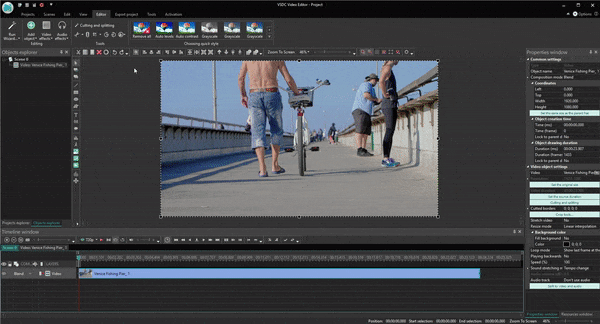
And if you’re into video editing, VSDC is capable of much more than just cropping. It provides you with a toolset for creating a movie of any complexity – be it a short clip based on your family vacation recordings, or a serious project involving video effects, color correction, and audio adjusting.
Download VSDC Free Video Editor
How to crop a video for free on a Windows PC
Once you’ve imported a video to VSDC, go to the top menu and click on the “Crop borders” icon located in the Cutting and Splitting menu as illustrated below. You can also access this menu by clicking the right mouse button on the video you need to crop.
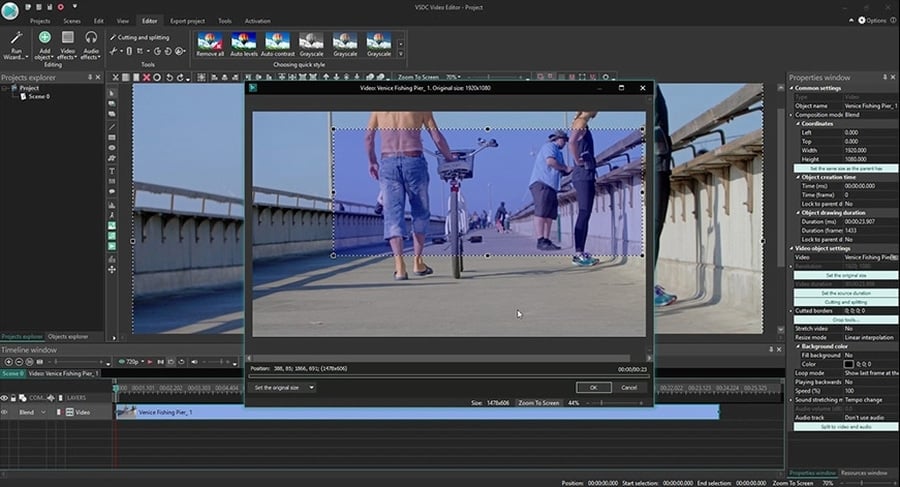
As you may have noticed, you’re offered to crop a custom region of a video or use an auto-cropping feature. The latter means the video size will be automatically adjusted to the size of the scene. Most users, however, need to crop video borders using custom settings. Let’s see how to do that.
Once you choose “Custom region”, a new window will pop up for you to select the area on the video you want to crop. Here is what you can do there:
- Highlight, grab and drag a chosen region to define what will stay in the scene after cropping.
- Zoom in for higher precision when cropping a video with multiple objects.
- Scroll back and forward to see how the cropped area looks throughout the entire scene.
- Use the “Set the original size” button to apply alignment or set the size of a video in accordance with the scene’s, object’s, or image’s aspect ratio.
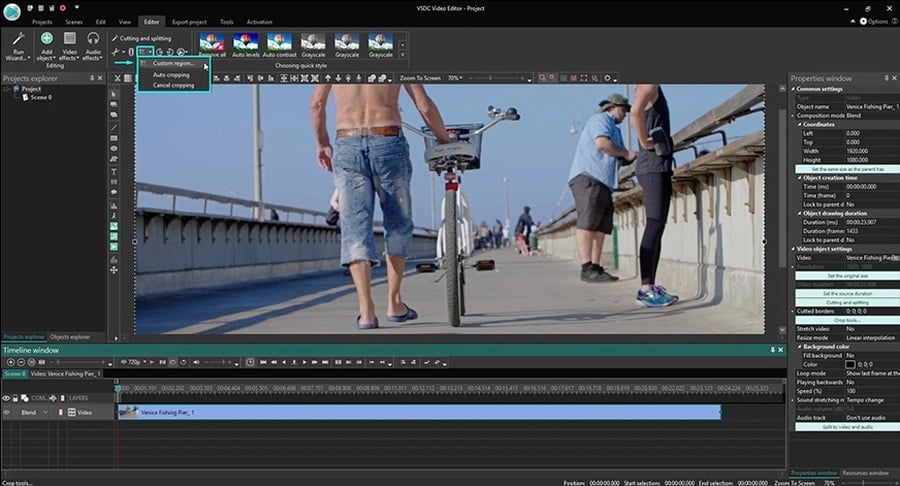
Finally, you can use the “Properties window” on the right to precisely crop each video border by manually changing their positions – see the illustration below. If the Properties window doesn’t appear automatically, use the right mouse button to click on the video and choose “Properties” from the menu.
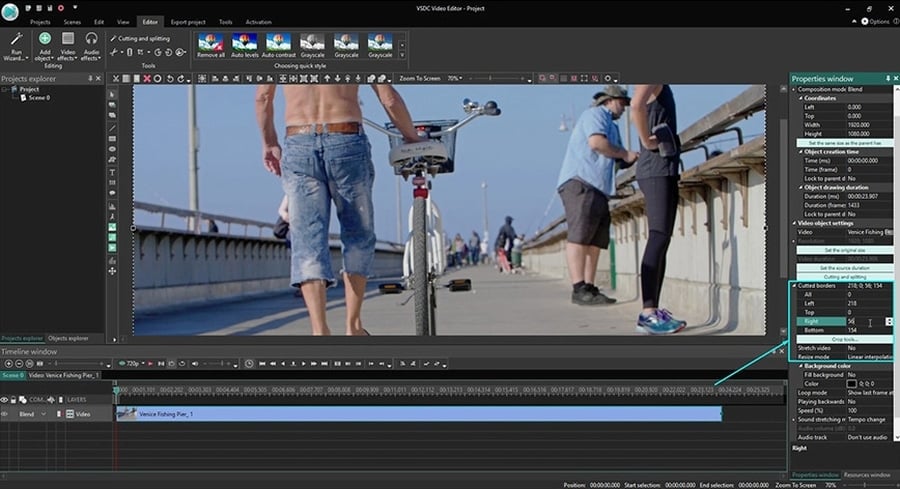
Once you’re done cropping the video borders, proceed to the Export project tab (top menu) and choose the required format. Use the preview button to make sure that the output video only contains the part you’ve defined, and the aspect ratio is correct. Note that video quality, resolution, its width, and height can be changed if you choose to edit the export profile. If everything looks the way you want, simply click “Export project” to save the file to your PC.
Other video editing instructions you may be interested in:

This program allows you to capture the video of your desktop and save it on your PC in various formats. Coupled with a video editor, the program is a great tool for creating presentations, tutorials and demo videos.

The program captures video from external devices and records it to computer in a free format. You can save video from video tuners, webcams, capture cards and other gadgets.

"VSDC Free Video Editor is a surprisingly powerful, if unconventional video editor"
- PC Advisor

"This video editor gives you tons of control and editing power"
- CNet

"The editor handles many common formats and boasts a good deal of capabilities when it comes time to alter lighting, splice video, and apply filters and transitions in post production"
- Digital Trends
